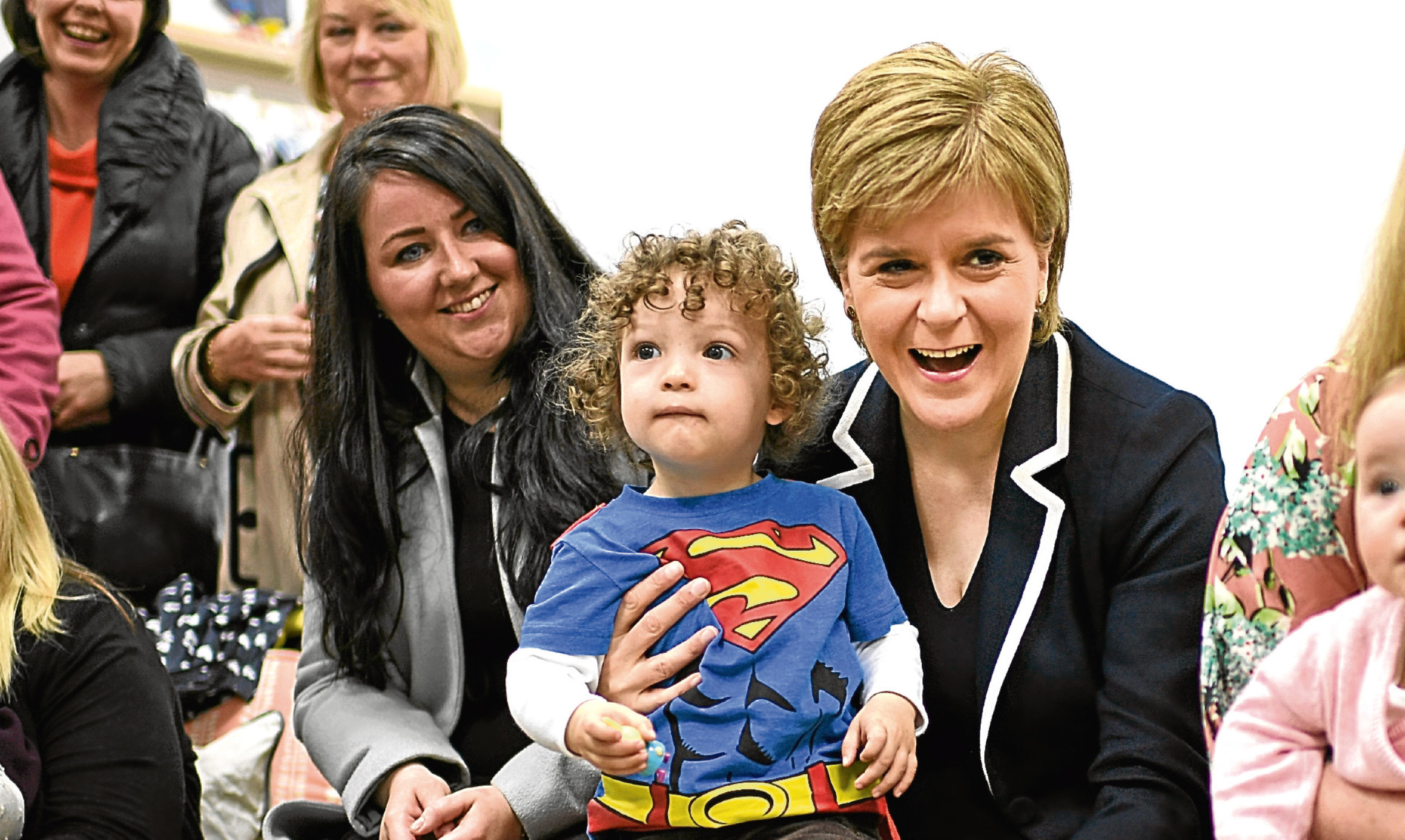The Nationalists took their campaign to Hamilton on Monday, with Nicola Sturgeon leading the baby cuddling photo opportunities. Nothing unusual about that, you may think – there is a general election in three weeks.
But with 54 seats to defend, some with slim majorities, the South Lanarkshire constituency, long seen as SNP territory after Winnie Ewing first won there in 1967, surely doesn’t need such high profile intervention.
Or does it?
The First Minister has also been in Gordon recently, the seat of her predecessor Alex Salmond, where they used to weigh not count the votes.
The Scottish Conservatives are claiming to be in with a chance in this separatist stronghold and that has clearly sent shivers down the collective Nat spine.
Do they think Hamilton, where sitting MP Angela Crawley has a majority of 10,100, is vulnerable too? If the SNP is worried about such seats, then the Tories’ boasts could well be justified.
Having to go on the defence does not suit Sturgeon. She has been an attack dog politician in an assertive party, the “Yes” woman of Scottish politics.
But there has been a change in the country’s mood, with a noted swing against the Nationalists in the council elections earlier this month.
Voters have begun to desert, enervated by Sturgeon’s insistence on a second independence referendum and discovering, mostly in Ruth Davidson’s Tories, a refuge from the threat of constitutional turmoil.
For the SNP, which had been trying and failing to bolster its case for separation on the back of Brexit, this general election is bad timing.
The party was already sounding unsteady on several fronts, not least Europe and as it turns out, was unprepared to put its policies before the electorate. This became obvious when, over the weekend, we witnessed Sturgeon changing her mind on live television about her stance on the EU.
Since the UK voted to leave last June, she has insisted that Scotland, which voted overwhelmingly to remain, would rejoin Europe in the event of independence.
But on the Andrew Marr programme on Sunday she said a separate Scotland might have to join the European Free Trade Association (EFTA) first and then apply for full membership in a “phased approach”.
EFTA countries, which include Norway and Switzerland, have access to the single market but no role in decision-making processes.
Her volte face is seen by opponents as a cynical ploy to appease those secessionists who are opposed to EU membership – about 400,000 of whom voted to leave in 2016.
Sturgeon has belatedly woken up to the fact that aligning independence to Brexit will not increase Nationalist support and, indeed, could well have the opposite effect, driving away SNP veterans who say they don’t want to shake off London only to have to kowtow to Brussels.
However, she can’t base her whole argument for indyref two on Britain leaving the EU and at the same time refuse to commit to Europe post-independence.
She has made it clear that in Scotland the general election is about the Tories taking us out of Europe. But now, furiously back pedalling, she says she is not yet ready to set out her full position on the EU.
She also refused on Monday to spell out her currency plans in an independent Scotland.
Why is such a matter irrelevant in a Westminster election? The SNP’s confusion over what currency to adopt was a significant factor in their defeat in 2014 and an issue voters might have expected them to have sorted out nearly three years later.
Sturgeon has ruled out joining the euro and opted for the pound in the short term.
She is asking voters to put their faith in her party without presenting them with basic information. This tactic ultimately backfired in 2014 and it looks likely to derail her ambitions again.
There was a time when Sturgeon could do no wrong in her supporters’ eyes.
But people are not fooled forever. Now when they look for answers to the country’s problems they expect clarity from a government that has been in power for a decade.
If Sturgeon can’t deliver for them, they will find someone who can.
